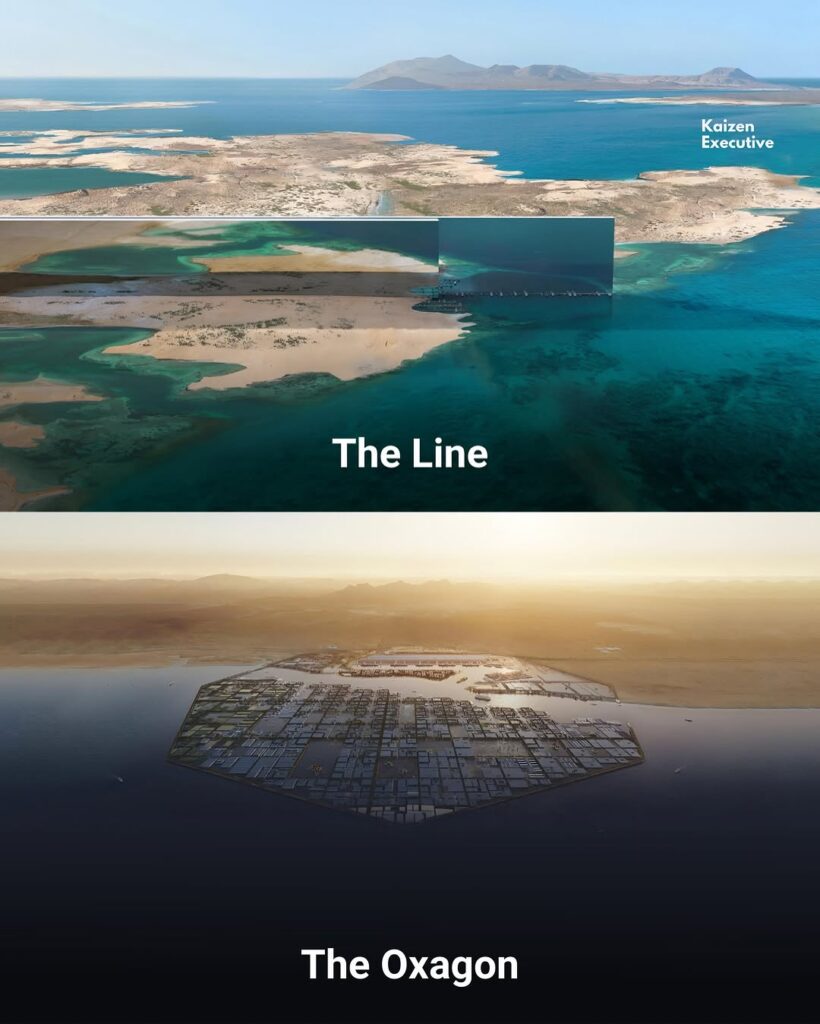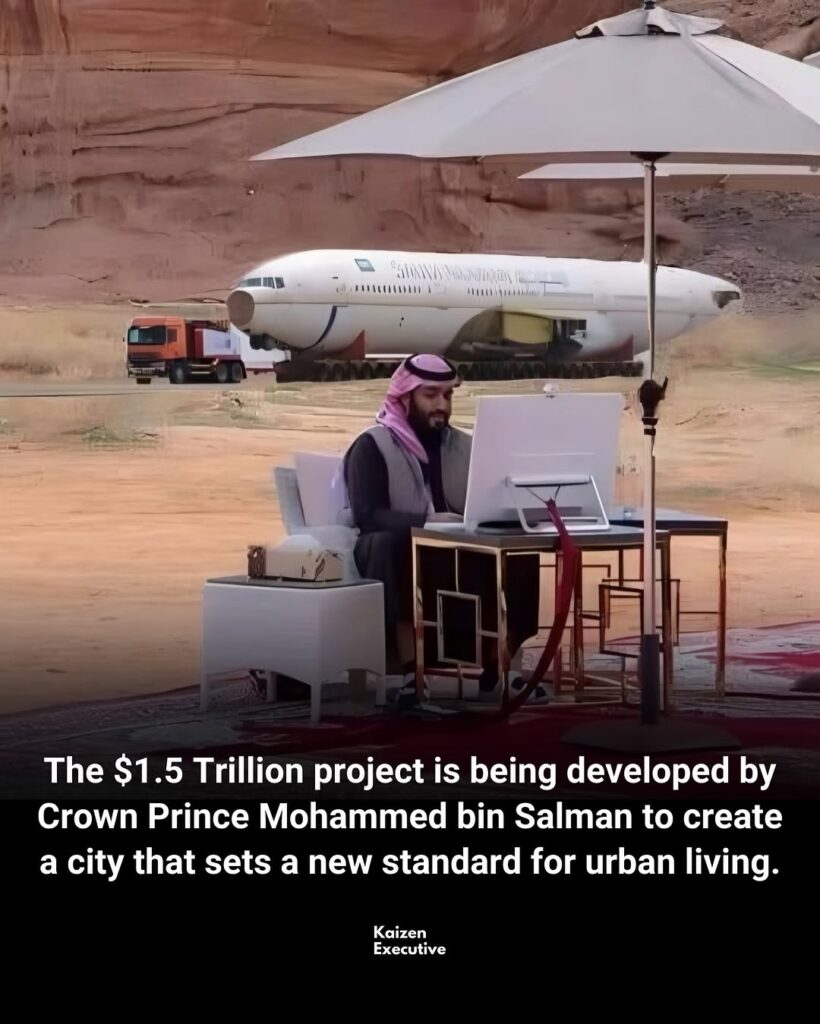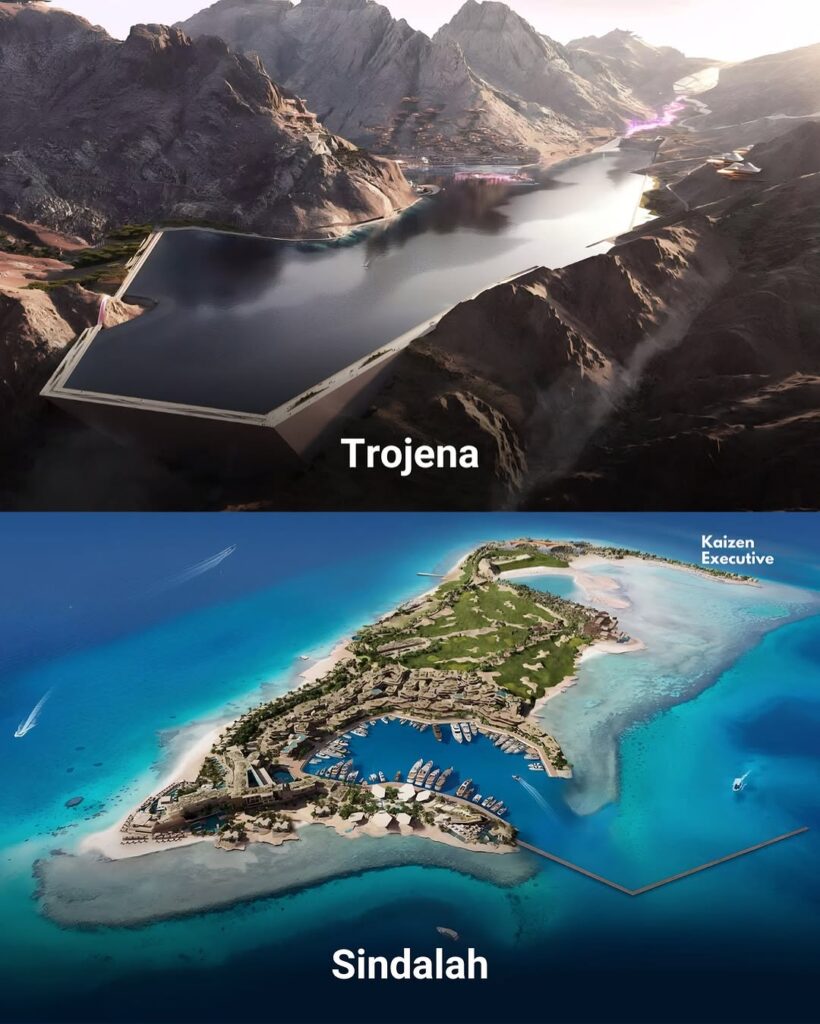Saudi Arabia is making headlines with its groundbreaking Neom megacity, a $1.5 trillion project envisioned by Crown Prince Mohammed bin Salman. This ambitious initiative not only aims to redefine urban living but is also consuming 20% of the global steel supply, showcasing its massive scale and impact. Here’s everything you need to know about Neom and other transformative megacities shaping our future.
What is Neom?
Neom is a futuristic city located in Saudi Arabia’s Tabuk province, stretching across 26,500 square kilometers. It is part of the kingdom’s Vision 2030 plan to diversify its economy beyond oil and embrace sustainable development. Designed to prioritize renewable energy, smart technology, and sustainability, Neom is set to become a global hub for innovation.
Key Components of Neom
1. The Line
- A 170-kilometer linear city with no cars, roads, or pollution.
- Runs entirely on renewable energy.
- Designed to house 9 million residents in a futuristic, walkable urban space.

2. Oxagon
- The world’s largest floating industrial hub.
- Focuses on advanced manufacturing and robotics.
- Aims to revolutionize industrial innovation while preserving the environment.

3. Trojena
- A luxury ski resort in the desert.
- Combines adventure tourism with cutting-edge technology.
- Expected to host the 2029 Asian Winter Games, blending tradition with modernity.

Other Megacity Projects to Watch (2030–2045)
While Neom is leading the charge, several other megacities worldwide are making strides:
1. Masdar City (UAE)
- A zero-carbon, smart city initiative near Abu Dhabi.
- Focuses on renewable energy and sustainability.
2. Songdo International Business District (South Korea)
- A smart city integrating advanced IoT systems.
- Built on reclaimed land, it’s a model for green urban planning.
3. Forest City (Malaysia)
- A green urban paradise on artificial islands.
- Features vertical gardens and smart homes.
4. Smart City in Gujarat (India)
- Part of India’s Smart Cities Mission.
- Aims to integrate technology with sustainable urban living.
Why Neom and Megacities Matter
These projects are not just about size and scale—they represent a shift towards sustainable urban development. Here’s why they’re significant:
- Environmental Impact: Focus on renewable energy and eco-friendly designs.
- Technological Innovation: Integration of smart technology for better urban management.
- Economic Growth: Creation of jobs and diversification of economies.
FAQs About Neom and Future Megacities
Q1: Why is Neom consuming 20% of the global steel supply?
A1: The massive scale and futuristic design of Neom’s projects, such as The Line and Oxagon, require advanced construction materials, including steel.
Q2: How does Neom align with sustainability goals?
A2: Neom prioritizes renewable energy, zero-carbon footprints, and eco-friendly urban designs, making it a model for sustainable development.
Q3: When will Neom be completed?
A3: Neom’s key components, including The Line and Trojena, are expected to be completed between 2030 and 2045.
Q4: Are there similar projects worldwide?
A4: Yes, other megacities like Masdar City (UAE), Songdo (South Korea), and Forest City (Malaysia) are also innovating in sustainable urban living.






Leave a Reply